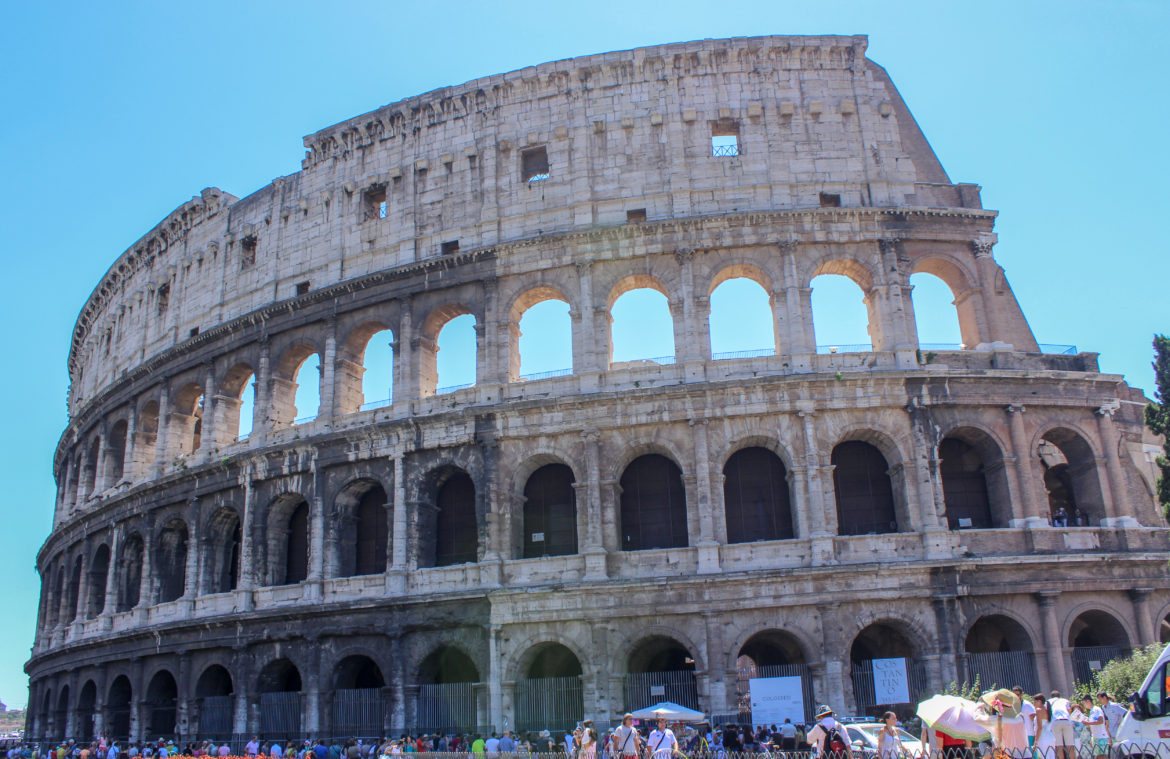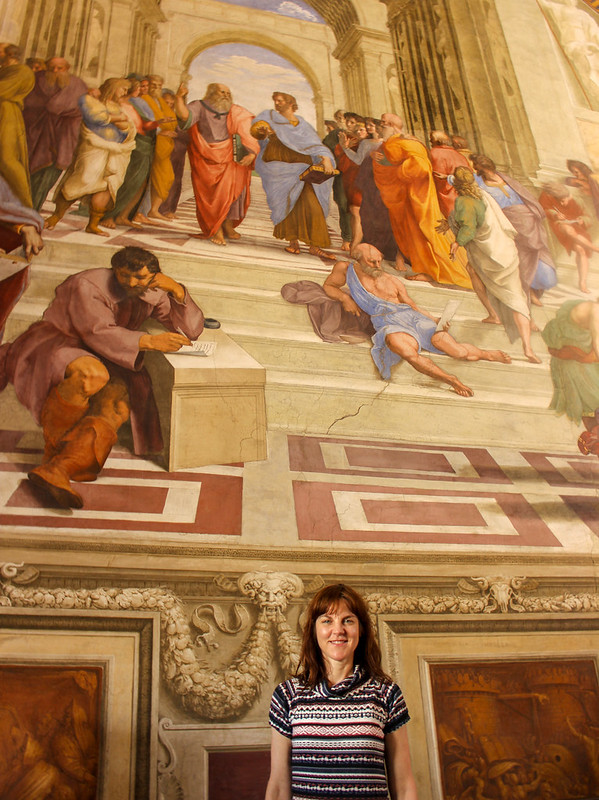As they say, Rome or “The Eternal City” wasn’t built in a day. Throughout 3 millenniums, it has created a treasure trove of history and art. Being there takes you back in time to be inspired by all that’s happened and been created in Rome. Planning is essential to get the most out of your time. Rome is one of my favorite destinations for going back in time to relive history. Read on to learn about how to make the top 10 Rome’s historic highlights tour.
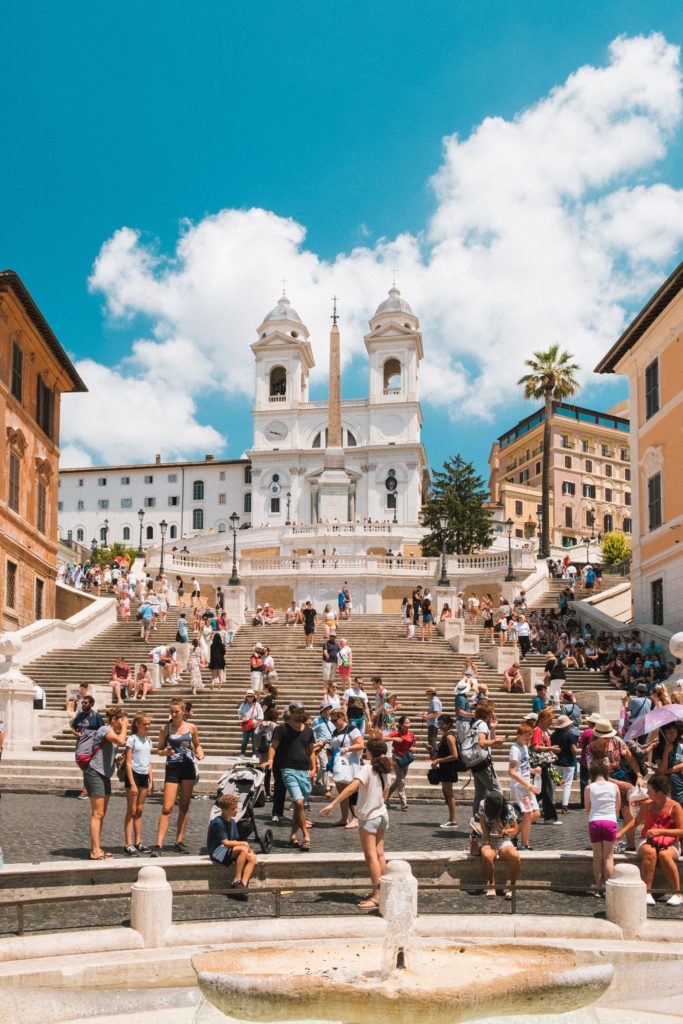
Rome is in the central-western part of Italy along the Tiber River. Rome’s history goes back almost 3,000 years and is especially known for its Roman Empire from 31 BC – 476 AD. It started when Augustus Caesar became the first emperor, lasting until the fall of Constantinople. The Roman Empire expanded by seizing territories throughout Europe, northern Africa and western Asia. The end of the Roman Empire marked the beginning of the Middle Ages. Rome, alongside Florence, became one of the first cities for the Italian Renaissance. Even more, Rome became the birthplace of the Baroque style and Neoclassicism. Now, as the capital to the Republic of Italy, the president and political centers are in Rome.
The Vatican city-state has monumental cultural sites, such as, the Sistine Chapel and Museums with Saint Peter’s Basilica. Independent from Rome, this religious center is the world’s smallest sovereign state, inside the Rome boundaries. It’s ruled by the pope and is head of the Catholic Church.
Rome’s Historic Highlights Tour
Roman Forum, Colosseum and Palantine Hill
Tip: Plan at least a half day to see the Roman Forum, Colosseum and Palantine Hill together. They are all part of the same complex and an admission ticket includes all 3 monuments. Also, order skip-the-line tours online beforehand to avoid the long queue.
Foro Romano (Roman Forum): Why not start your tour at the origins of Rome, right here at the Roman Forum. Near the Colosseum, this is the ancient city of Rome. The ruins here remind us of the history that took place here. For example, the original Senate, criminal trials and elections happened here.
Colosseo (Colosseum): This is one of Rome’s most iconic symbols of its ancient empire. Built in travertine limestone, tuff (volcanic rock) and concrete, it was the largest amphitheater ever created in AD 80. The insurmountable symbol off strength upholds the ruins, even with the crumbling walls. One can almost hear back 2,000 years to the macabre roaring and cheering from spectators of gladiators and games.
Palantine Hill: The oasis on top of Palantine Hill, rises above the Forum. This is where the emperors, like Augustus Cesar built their palaces. There are wonderful views of the city here and tunnels used by servants to serve banquets. The Palantine Museum is also on this hill, where a baroque palace and Renaissance gardens once stood. In addition, between the Colosseum and Palantine Hill is the Arch of Constantine dedicated to this emperor in 315.
St. Peter’s Basilica, Vatican Museum and Sistine Chapel
Most Important Tip: Order tours or tickets online to avoid the long queues. There are various skip-the-lines tours to see the Basilica, Sistine Chapel and Vatican Museums.
St. Peter’s Basilica: It’s nice to see St. Peter’s Basilica and piazza first before the Vatican Museums, to get the overall big picture. There are many tours available, from seeing the crypt to climbing up into the Dome for the best view in Rome. Wandering the Renaissance-style basilica and Doric colonnades in the piazza is a great introduction to the grand perspective and history.
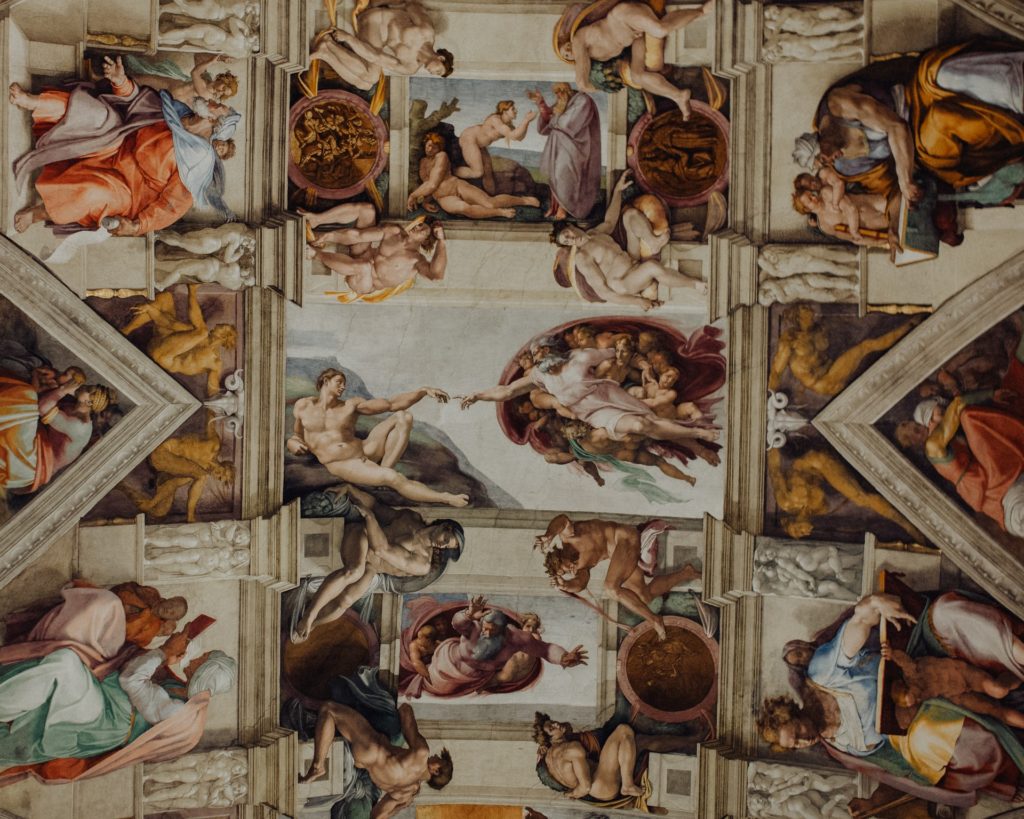
Vatican Museums and Sistine Chapel: When you enter the Vatican Museums you first walk through the Raphael Rooms. Also, known as Stanze di Raffaello, the 4 rooms are a reception to the Apostolic Palace. It features the famous frescoes painted by the Renaissance artist, Raphael.
This is my absolute favorite part of The Vatican, even more than the Sistine Chapel Ceiling. The Raphael Rooms is renowned as some of the world’s best high Renaissance Art. So don’t overlook it, especially The School of Athens fresco.
Michelangelo’s masterpiece is the Sistine Chapel Ceiling.
Prepare your neck muscles for looking up, because it’s hard to look away from such detail and magnificence. The ceiling reveals 9 scenes from the Book of Genesis, for example, the most famous Creation of Adam. It’s astounding to imagine how Michelangelo created such a display of art in this challenging position. Most people assume Michelangelo was lying down. However, he used scaffolds, allowing him to stand and reach above his head.
Additionally, Michelangelo’s other fresco masterpiece is on the sanctuary wall, The Last Judgement. Other paintings are exhibited in the Sistine Chapel by other masters like Botticelli and Perugino with large tapestries by Raphael.
Related: The Extraordinary Vatican Museums, St. Peters Basilica and Sistine Chapel Tour
Other Rome’s Historic Highlights
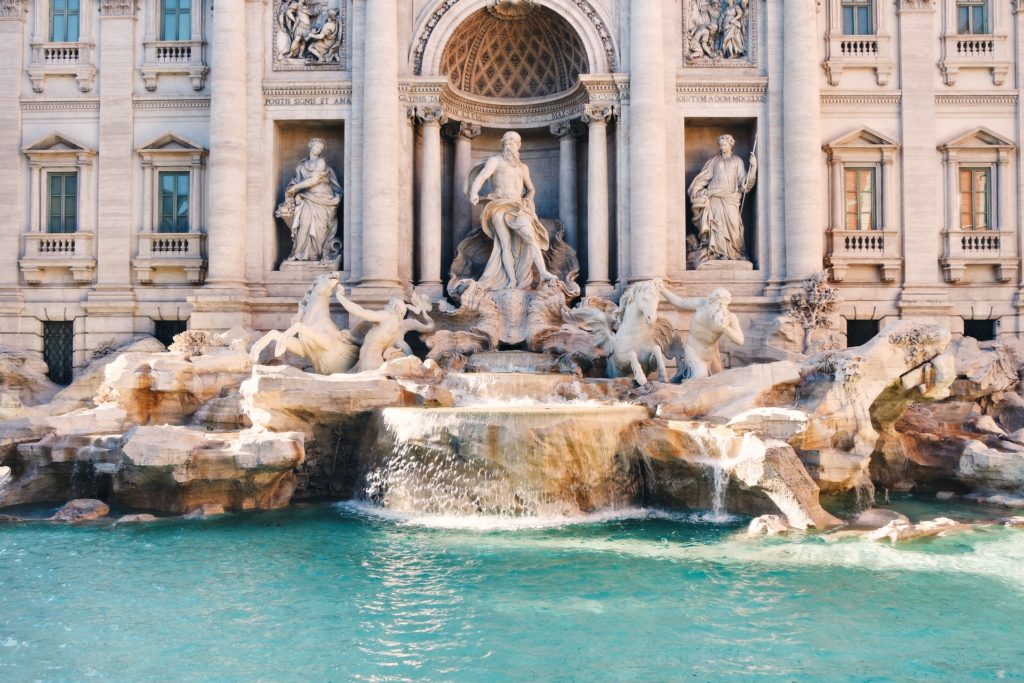
Trevi Fountain: This baroque fountain in Trevi district is the most famous fountain in Rome, with the taming of the waters theme. Its sculptures include the Triton (Sea God) guiding Oceanus’ shell chariot, taming the hippocamps (seahorses). Also, don’t miss throwing 1-3 coins, using right hand over the left shoulder into the fountain. According to legend throwing 1 coin means you’ll return to Rome, 2 means you’ll return and fall in love and 3 means you’ll return, fall in love and marry.
Spanish Steps: These iconic steep steps are between Piazza di Spagna at the base and Piazza Trinita del Monti on top. Its 135 steps take you to Triita del Monti Church at the top. Its name comes from the Spanish Embassy on top of the hill linked by the steps to the Spanish square below. This is a popular place to hang out and people watch. Also, for literary fans, to the right of the Spanish Steps is the Keats-Shelly Memorial House.
Piazza Navona: Built over the Stadium of Domitian, Piazza Navona is one of the most spectacular squares of Baroque Rome. Overall, the church of Sant’Agnese in Agone dominates the square, along with 3 fountains: Moor Fountain, Fountain of Neptune and Fountain of 4 Rivers.
The Pantheon is the most well-preserved building from ancient Rome.
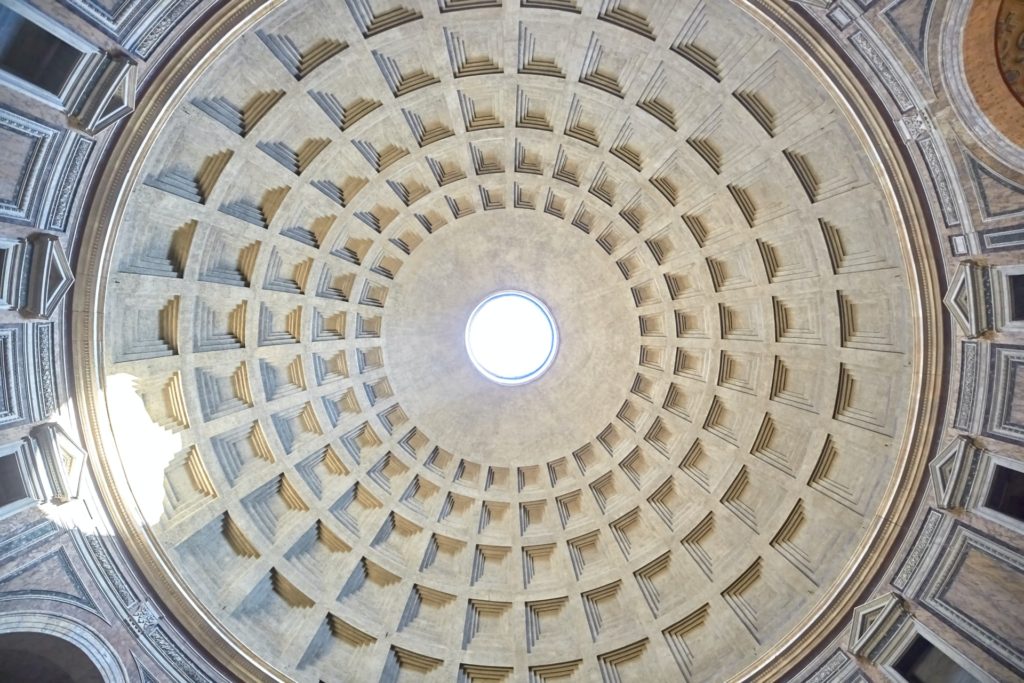
Pantheon: Near the Piazza Navona, this edifice was built in 125 CE, with an extraordinary dome. It’s a lasting reminder to the genius of Roman architects. The dome was the largest of its kind when it was built. At the top is an opening or oculus. The Pantheon inspired the U.S. Capitol rotunda. Because it’s so intact, visitors can step inside to a glimpse of Rome 2,000 years ago.
Sunset View from Janiculum Hill: Janiculum is the second tallest hill, although not considered one of the 7 hills of Rome. It provides stunning, panoramic views of the Vatican and the overall skyline of Rome. What a better way to end the day in the Eternal City than seeing the sunset. Other wonderful locations for a view of a Roman sunset include Terrazza del Pincio and Piazza Navona.
Overall, Rome’s Historic Highlights Tour
A visit to Rome is just plain good for the soul. Here, we experience those history books and feel the true exuberance of “The Eternal City.” All the creative genius artifacts of Rome inspire you to be your best self. Among its extraordinary art, architecture, ruins and sculptures you feel the deep past, alongside the hope of a new day. Amore!
Read More!
Ancient Pompeii’s Top 10 Must-See Attractions
Picturesque Taormina, Sicily Walking Tour Highlights

